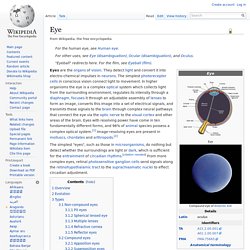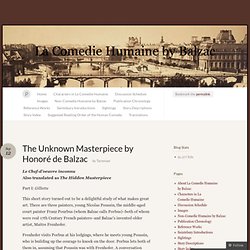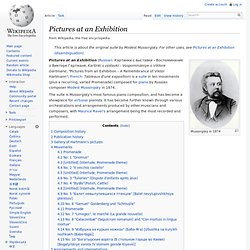

'Armory Show' That Shocked America In 1913, Celebrates 100. Hide captionOn Feb. 17, 1913, the International Exhibition of Modern Art opened at the 69th Regiment Armory on Lexington Avenue in New York.

The Armory Show, as it came to be known, had a profound effect on American art. Smithsonian Institution Archives of American Art. A Voice of Moderation: Roosevelt on the Armory Show. In 1913, an “International Exhibition of Modern Art,” eventually seen by a half million people, rocked the American art world.

First mounted at New York City’s 69th Regiment Armory, it became known as the Armory Show, and its self-consciously “modern” approach challenged the dominance of conservative, staid styles of European art. Two-thirds of the 1,600 works were by Americans, and the Europeans whose works were exhibited—Picasso, Matisse, Seurat, Van Gogh, Gaughin, and Duchamp among them—were far from the conservatives that Americans were used to. Most critics took extreme positions, either praising or damning the show.
The Armory Show at 100. How Art Made the World. World Heritage Centre - Interactive Maps. Callanish Stones. The Callanish Stones (or "Callanish I", Clachan Chalanais or Tursachan Chalanais in Gaelic) are an arrangement of standing stones placed in a cruciform pattern with a central stone circle.

They were erected in the late Neolithic era, and were a focus for ritual activity during the Bronze Age. They are near the village of Callanish (Gaelic: Calanais) on the west coast of Lewis in the Outer Hebrides, Scotland. Location[edit] The Callanish Stones (grid reference NB213330) are situated on a low ridge above the waters of Loch Roag with the hills of Great Bernera as a backdrop.[1] Management[edit] The Callanish Stones are managed by Historic Scotland. Description[edit] Ars Technica. Eye. Overview[edit] Complex eyes can distinguish shapes and colours.

The visual fields of many organisms, especially predators, involve large areas of binocular vision to improve depth perception. In other organisms, eyes are located so as to maximise the field of view, such as in rabbits and horses, which have monocular vision. Compound eyes are found among the arthropods and are composed of many simple facets which, depending on the details of anatomy, may give either a single pixelated image or multiple images, per eye.
Each sensor has its own lens and photosensitive cell(s). Exploring Linear Perspective. Linear perspective is a mathematical system for creating the illusion of space and distance on a flat surface.

The system originated in Florence, Italy in the early 1400s. The artist and architect Brunelleschi demonstrated its principles, but another architect and writer, Leon Battista Alberti was first to write down rules of linear perspective for artists to follow. Leonardo da Vinci probably learned Alberti's system while serving as an apprentice to the artist Verrocchio in Florence. Color Theory 101. Causes of Color. What Colors Mean in Different Cultures. Colours in Cultures A Western / American B Japanese C Hindu D Native American E Chinese F Asian G Eastern European H Muslim I African J South American 1 Anger 2 Art / Creativity 3 Authority 4 Bad Luck 5 Balance 6 Beauty 7 Calm 8 Celebration 9 Children 10 Cold 11 Compassion 12 Courage 13 Cowardice 14 Cruelty 15 Danger 16 Death 17 Decadence 18 Deceit 19 Desire 20 Earthy 21 Energy 22 Erotic 23 Eternity 24 Evil 25 Excitement 26 Family 27 Femininity 28 Fertility 29 Flamboyance 30 Freedom 31 Friendly 32 Fun 33 God 34 Gods 35 Good Luck 36 Gratitude 37 Growth 38 Happiness 39 Healing 40 Healthy 41 Heat 42 Heaven Gray Yellow Silver Gold David McCandless & AlwaysWithHonor.com//v1.0//Apr 09 // InformationIsBeautiful.net.

How Art Made the World. Lascaux. The discovery of the monumental Lascaux cave in 1940 brought with it a new era in our knowledge of both prehistoric art and human origins.

Encyclopedia Britannica. Le chef-d'oeuvre inconnu. Cours d'orthographe - Orthodidacte. The Unknown Masterpiece by Honoré de Balzac. Le Chef-d’oeuvre inconnu Also translated as The Hidden Masterpiece Part I: Gillette This short story turned out to be a delightful study of what makes great art.

There are three painters, young Nicolas Poussin, the middle-aged court painter Franz Pourbus (whom Balzac calls Porbus)–both of whom were real 17th Century French painters–and Balzac’s invented older artist, Maitre Frenhofer. Frenhofer visits Porbus at his lodgings, where he meets young Poussin, who is building up the courage to knock on the door. Porbus lets both of them in, assuming that Poussin was with Frenhofer. “Your lady is assembled nicely enough, but she’s not alive.
Culture - Art. Art History: The Basics. - artpace. The Metropolitan Museum of Art. The Menil Collection. Pictures at an Exhibition. Mussorgsky in 1874 The suite is Mussorgsky's most famous piano composition, and has become a showpiece for virtuoso pianists.

It has become further known through various orchestrations and arrangements produced by other musicians and composers, with Maurice Ravel's arrangement being the most recorded and performed. Composition history[edit] It was probably in 1870 that Mussorgsky met artist and architect Viktor Hartmann. Both men were devoted to the cause of an intrinsically Russian art and quickly became friends.